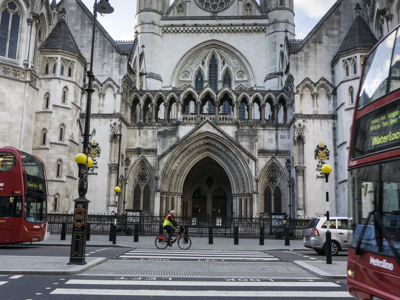Supreme Court rules on Rwanda policy
On 15 November the Supreme Court determined the Rwanda removals policy to be unlawful. The unanimous judgment of lords Reed and Lloyd-Jones (with whom lords Hodge, Briggs and Sales agreed) is remarkably clear, and relatively short.
Posted on 23 November 2023
The key issue for the court was the risk of refoulement. Namely, the risk that individuals might not have their asylum claims determined properly in Rwanda, and so might be forced to return (directly or indirectly) to their country of origin, where they face a real risk of ill-treatment.
The court also considered a cross-appeal on the issue of EU retained law, but this was dismissed.
The court’s analysis of the legal framework emphasised that non-refoulement is a core principle of international and domestic law (that is, not just imposed by the European Convention on Human Rights (ECHR)).
In order for Rwanda to qualify as a ‘safe third country’, for removals to take place under the current arrangements, paragraph 345B of the Immigration Act 1971 requires that ‘the principle of non-refoulement will be respected in that country in accordance with the Refugee Convention’.
Internationally, the principle of non-refoulement is protected not only by the ECHR, but also by other international conventions to which the UK is party: the 1951 UN Refugee Convention, the UN Convention against Torture and Other Cruel, Inhuman or Degrading Treatment or Punishment of 1984 and the UN International Covenant on Civil and Political Rights of 1966.
Domestically, the ECHR is given effect through the Human Rights Act 1998. However, parliament has also provided safeguards against refoulement in other legislation including the Asylum and Immigration Appeals Act 1993, the Nationality, Immigration and Asylum Act 2002 and the Asylum and Immigration (Treatment of Claimants etc) Act 2004.
Interestingly, the court also observed that ‘[i]t may be that the principle of non-refoulement also forms part of customary international law… [and] consequently [is] binding upon all states in international law, regardless of whether they are party to any treaties which give it effect’, but clarified that this had not been addressed in the hearing and so was not part of the reasoning.
To assess the risk of refoulement, the court confirmed that the ‘correct test, derived from Soering, requires the court to decide for itself whether there are substantial grounds for believing that the removal of asylum seekers to Rwanda would expose them to a real risk of ill treatment, as a consequence of refoulement to another country’.
This requires ‘an examination of how the asylum procedure operates there, in order to ensure that it affords sufficient guarantees that asylum seekers are not at risk of being removed to their country of origin without a proper evaluation of their claims’.
The Supreme Court cast doubt on whether the Divisional Court had applied the correct test, and found that the court had erred in its treatment of the evidence ‘essentially by failing to engage with the evidence of the UNHCR’ (the UN Refugee Agency). There was ‘no doubt’ that the Court of Appeal was right to interfere with the conclusion.
In reviewing the evidence, the judgment begins with a reminder that Rwanda has recently emerged from an appalling genocide, and that while there may have been great progress economically and socially, there is still a much criticised human rights record.
The UNCHR adduced highly troubling evidence about previous treatment of refugees and the inadequacies of the asylum system. These concerns were wide-ranging and detailed. They include lack of independence and legal representation, and an as yet untested appeal system. The court found that the evidence ‘should not have been treated as dismissively as it was by the Divisional Court’.
The court dismissed the secretary of state’s reliance on assurances and the suggestion ‘that the past and the present [can] be effectively ignored or sidelined’. While the good faith of the government of Rwanda was not in dispute, the central issue was the practical ability to fulfil the assurances in light of the scale of changes which would be required.
Conclusions
Given the UNHCR’s compelling evidence, it is perhaps unsurprising that the Supreme Court dismissed the secretary of state’s appeal, not only finding that the Court of Appeal had been entitled to take the view that there were substantial grounds of a real risk of refoulement, but actively endorsing its conclusions.
The court did recognise that the Rwandan system can and will be developed, but expressed caution, pointing to the ‘significant changes’ which will be needed, which ‘may not be straightforward, as they require an appreciation that the current approach is inadequate, a change of attitudes, and effective training and monitoring’.
Observations
In the face of high levels of public and political interest, this judgment begins with a sober reminder that the court is not concerned with the politics and is tasked ‘a legal question’ to be decided ‘on the basis of the evidence and established legal principles’. The judgment then continues to provide a clear and careful analysis of the risk of refoulement and an unequivocal conclusion on the evidence as it currently stands. In doing so, the court found that ‘the government is not necessarily the only or the most reliable source of evidence about matters which may affect the risk of refoulement’ and that in reviewing the evidence as a whole, ‘the court brings to bear its own expertise and experience: weighing competing bodies of evidence, and assessing whether there are grounds for apprehending a risk, are familiar judicial functions’.
*This blog was first published in the Law Society Gazette on 17 November

Court of Appeal rules Rwanda policy unlawful on grounds of safety, and recognises problems with short-cut process
The Court of Appeal has today ruled that the Home Secretary’s Rwanda removals process is unlawful on grounds of safety and that sending anyone to Rwanda would breach Article 3 of the European Convention on Human Rights (ECHR).



